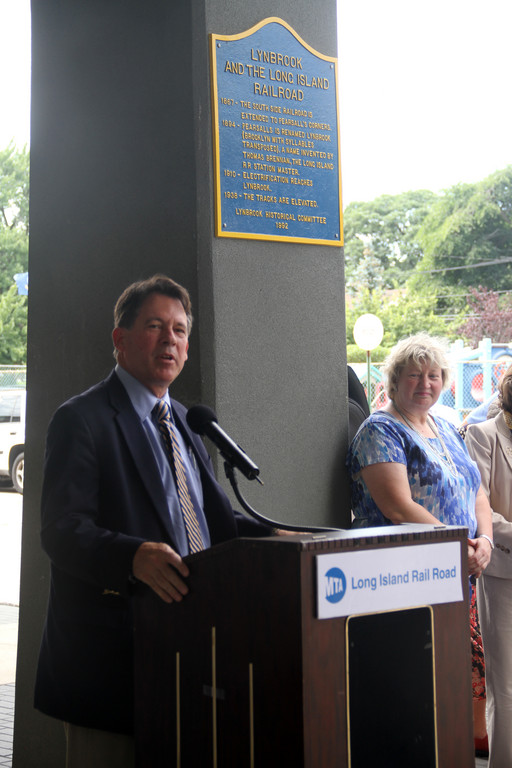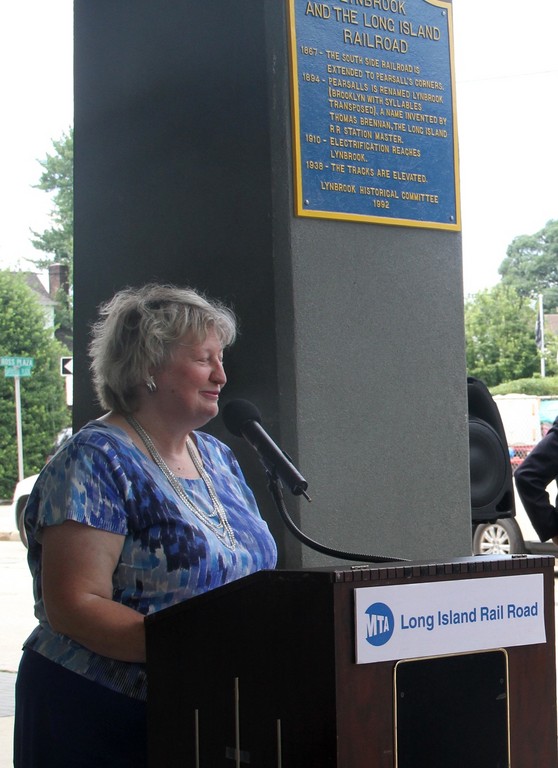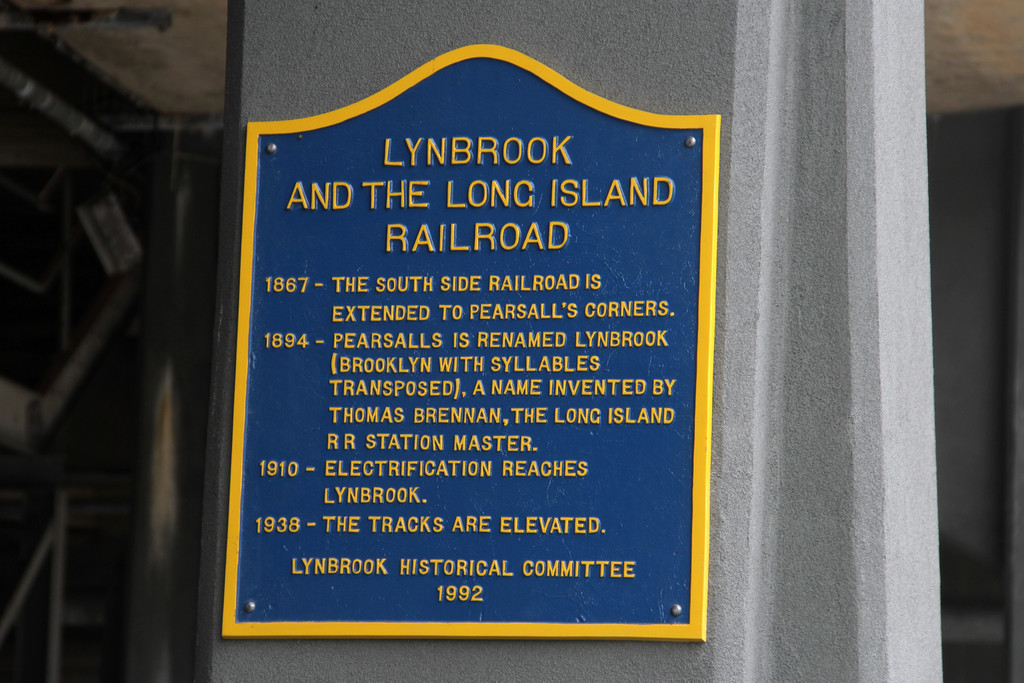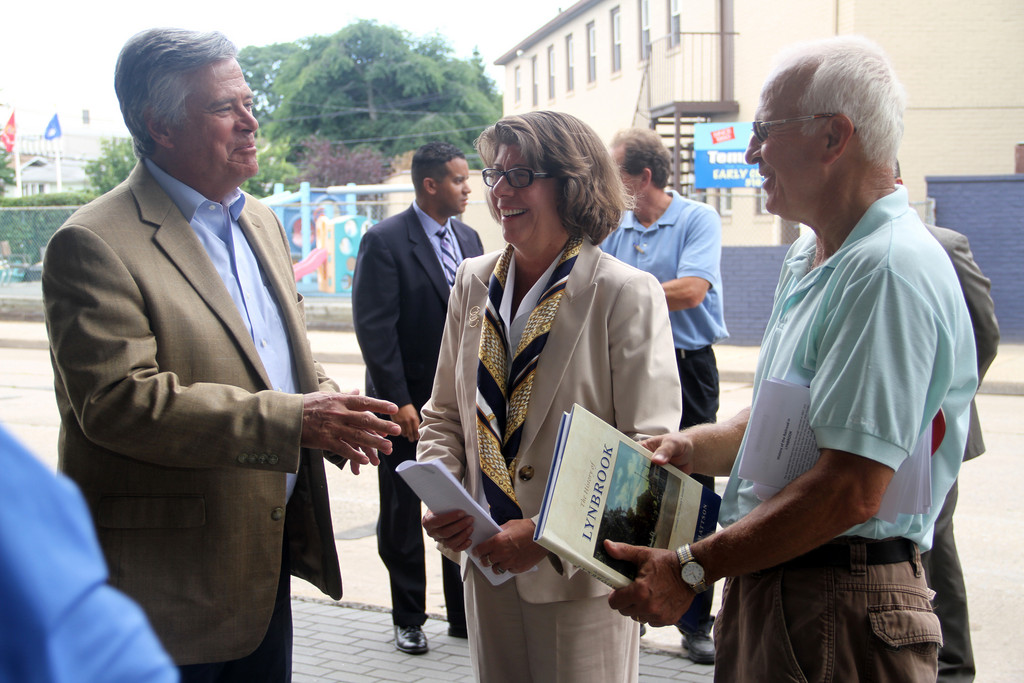The LIRR and Lynbrook’s history
Historical Society of Lynbrook & East Rockaway and officials gather to unveil commemorative plaques
It may have taken 23 years, but two plaques commemorating the historical significance of the Long Island Rail Road in Lynbrook have now taken their rightful places at the station. Several people played a big part in bringing the plaques to Lynbrook including members of the Historical Society of East Rockaway and Lynbrook, the LIRR and local elected officials.
The plaques were originally commissioned to be cast in 1989, but neither the village nor the LIRR followed up with the money for either purchase or the permission to install them. For more than two decades, the plaques weathered in the yard of the Catskill Casting Company, but Lynbrook Village Historian Art Mattson, Madeline Pearson, president of the HSERL, and Pat Sympson, secretary of the HSERL, recently tracked down the necessary information and spearheaded the mission to bring the plaques to Lynbrook.
On July 27, the plaques were officially unveiled, although they were installed days earlier at a ceremony at the Lynbrook station. HSERL members, local elected officials, and members of the LIRR, including its president Helena Williams, all spoke during the ceremony.
“Lynbrook Village, I think, has as strong a connection with the Long Island Rail Road as any small community,” said Mattson. He added that when the railroad came to the area in 1867, before it was known as Lynbrook, “we were a tiny hamlet, not much of anything, and the railroad really made what Lynbrook what it is.”
The two plaques, one placed under trestle by Ross Plaza and the other at the intersection of Atlantic and Stauderman avenues, detail historic events that pertain to the railroad in Lynbrook.
The first plaque lists the important dates about the station, including its creation in 1867 and the elevated platforms in 1938. Also, the plaque states that in 1894 Lynbrook got its name after previously being called Pearsalls due to Thomas Brennan, the stationmaster of the area. Brennan simply transposed the syllables in Brooklyn and posted it on the time schedule and station platform. “Now if you wanted to go to Pearsalls Corners from Brooklyn or New York you couldn’t find it,” Mattson said, “you had to Lynbrook.”

 60.0°,
Mostly Cloudy
60.0°,
Mostly Cloudy 













